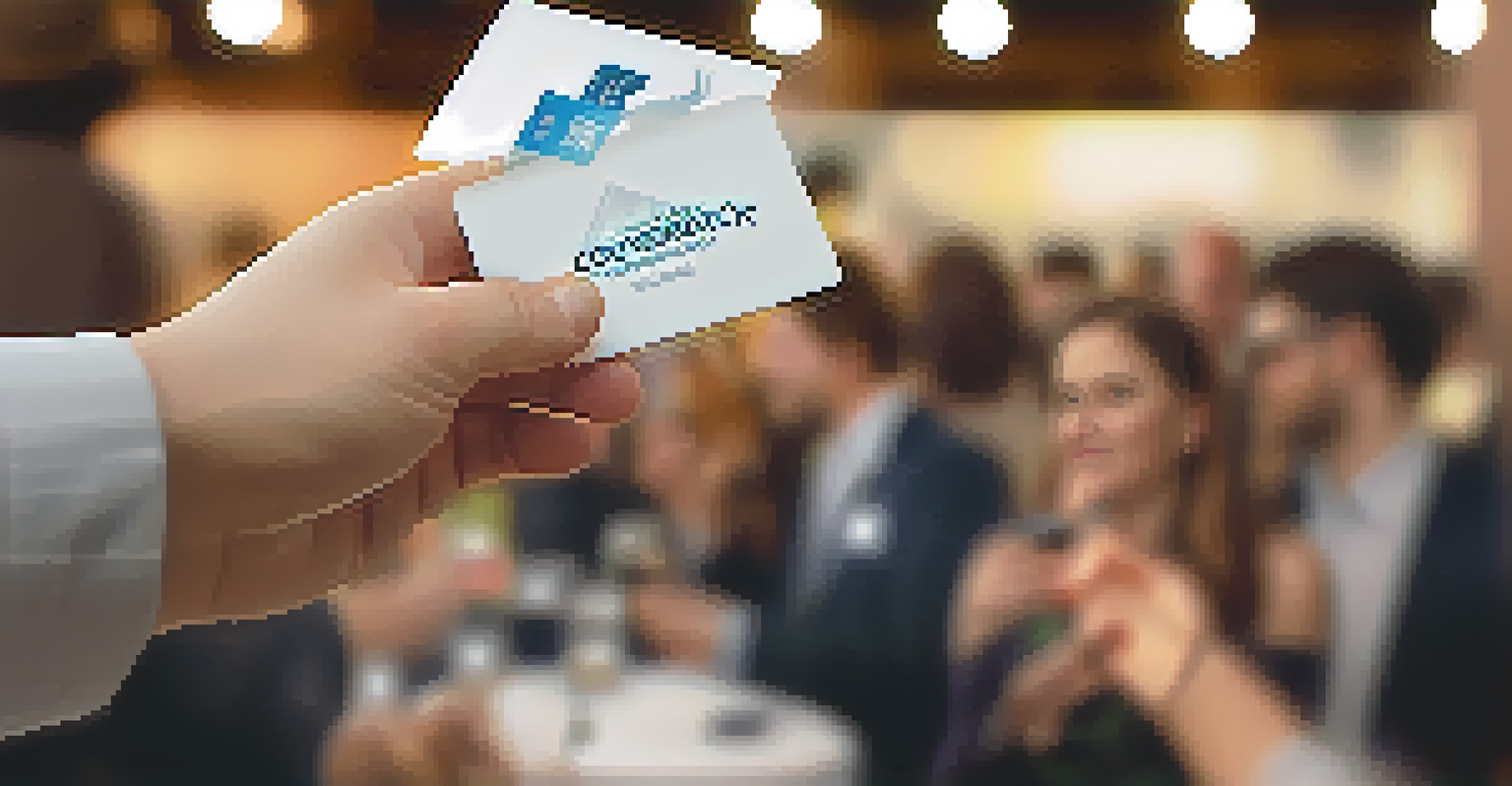How to Prepare for a Successful Business Networking Event

Understand the Purpose of Networking Events
Networking events serve as a platform for professionals to connect, share ideas, and explore opportunities. It's essential to understand that these gatherings are not just about collecting business cards; they’re about building genuine relationships. By recognizing the true purpose, you can shift your focus from merely attending to actively engaging.
Your network is your net worth.
Think of networking as planting seeds in a garden. Each conversation you have can blossom into a fruitful relationship or opportunity down the line. Understanding this purpose can help you approach the event with the right mindset, ready to nurture those connections.
As you prepare, consider what you want to achieve. Are you seeking new clients, collaborators, or perhaps mentorship? Clarity on your goals will guide your interactions and make them more meaningful.
Research Attendees and Speakers in Advance
Doing your homework before the event can pay off immensely. Familiarize yourself with the guest list, especially key speakers or potential contacts you want to approach. This knowledge allows you to strike up conversations that are relevant and insightful, making a lasting impression.

Imagine walking into an event and already knowing a few people you can connect with. It eliminates some of the awkwardness and helps you feel more confident. Plus, having a few tailored questions can spark deeper discussions.
Networking is About Relationships
Focus on building genuine connections rather than just exchanging business cards.
Don't forget to check out the speakers' backgrounds and their recent work. This way, you can engage them on topics they are passionate about, which can open doors to meaningful exchanges.
Prepare Your Elevator Pitch
An elevator pitch is a brief, persuasive speech that you can use to spark interest in what you or your business does. It should be concise and engaging, ideally lasting no longer than 30 seconds. Spending some time crafting your pitch ensures that you can introduce yourself effectively and confidently.
It’s not what you know, it’s who you know.
Think of your elevator pitch as a story. It should include who you are, what you do, and what sets you apart from others. For example, instead of simply stating your job title, share a compelling anecdote about how your work has made a difference.
Practice your pitch until it feels natural. You want to come across as authentic, not rehearsed. A well-delivered pitch can lead to deeper conversations and connections.
Dress Appropriately for the Event
First impressions matter, and your attire plays a significant role in how you're perceived at networking events. Dressing appropriately shows respect for the occasion and its attendees. Consider the event's theme and the industry standards to choose an outfit that strikes the right balance between professional and approachable.
If you're unsure, it's better to be slightly overdressed than underdressed. A polished appearance can boost your confidence, allowing you to focus on building connections rather than worrying about your outfit. Think of it as your business armor.
Research Attendees Beforehand
Familiarizing yourself with attendees and speakers helps facilitate more meaningful conversations.
Additionally, pay attention to grooming and personal hygiene. Small details, like clean shoes or a neat hairstyle, contribute to an overall professional image that invites others to approach you.
Bring Business Cards for Easy Networking
In today’s digital age, business cards may seem outdated, but they still hold value in networking. A well-designed card can serve as a tangible reminder of your interaction. When you meet someone, handing them your card makes it easy for them to reach out later.
Ensure your business card includes essential information: your name, title, company, phone number, and email address. You might also consider adding a personal touch, like a tagline or a QR code that links to your professional website or LinkedIn profile.
Remember to collect cards from others, too. This not only shows your interest but also provides you with a way to follow up after the event, helping to solidify connections.
Follow Up After the Event
The networking doesn’t end when the event wraps up; in fact, that’s just the beginning. Following up with the people you met is crucial to maintaining the connections you’ve established. A simple email or LinkedIn message expressing your enjoyment of the conversation can go a long way.
In your follow-up, personalize your message by referencing something specific you discussed. This shows that you genuinely value the connection and helps to jog their memory about who you are.
Follow Up for Lasting Connections
Reaching out after the event maintains the momentum of your interactions and solidifies relationships.
Timing is important, too. Aim to reach out within a few days while the event is still fresh in their mind. This promptness keeps the momentum going and increases the likelihood of a lasting relationship.
Stay Open and Engaging During Conversations
Networking is as much about listening as it is about talking. When engaged in conversations, show genuine interest in what others are saying. Active listening can help you uncover common interests and establish rapport, making the interaction more enjoyable for both parties.
Try to ask open-ended questions that encourage others to share their stories or insights. For instance, instead of asking, 'Do you like your job?' consider asking, 'What do you find most rewarding about your work?' This approach fosters deeper discussions and showcases your interest.

Lastly, don’t forget to share your own experiences, but keep it balanced. Networking is a two-way street, and the best connections often come from shared stories and mutual respect.